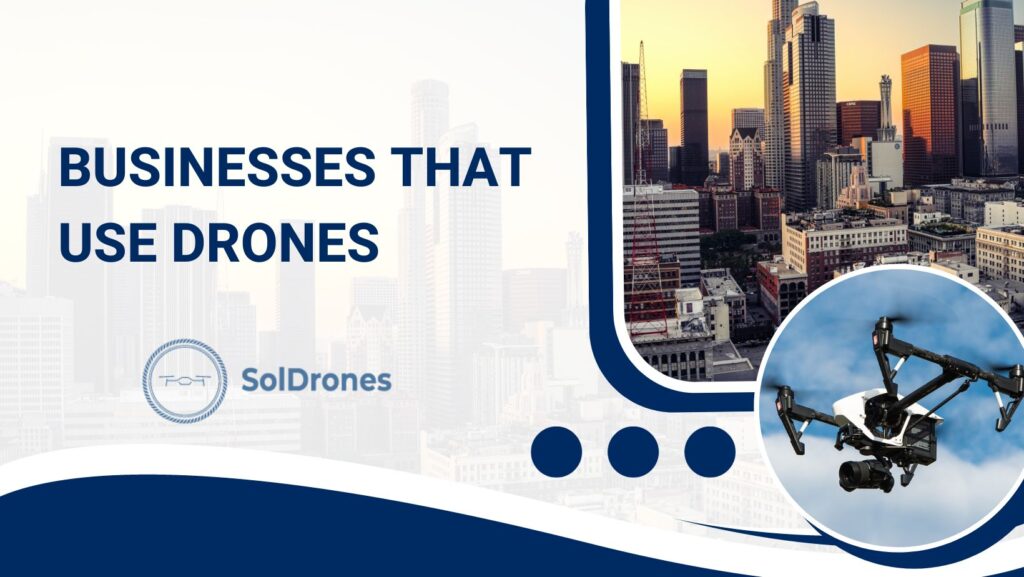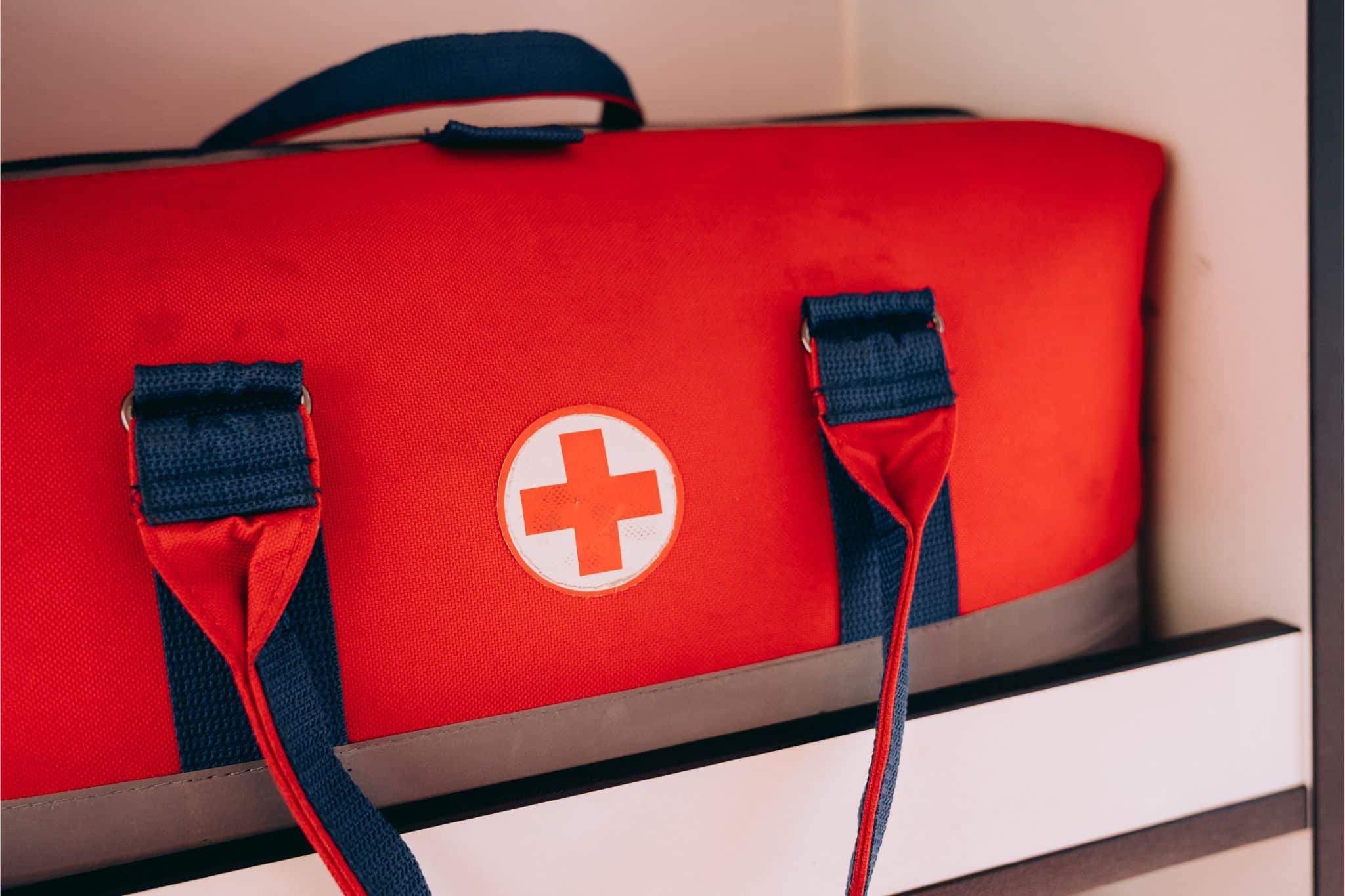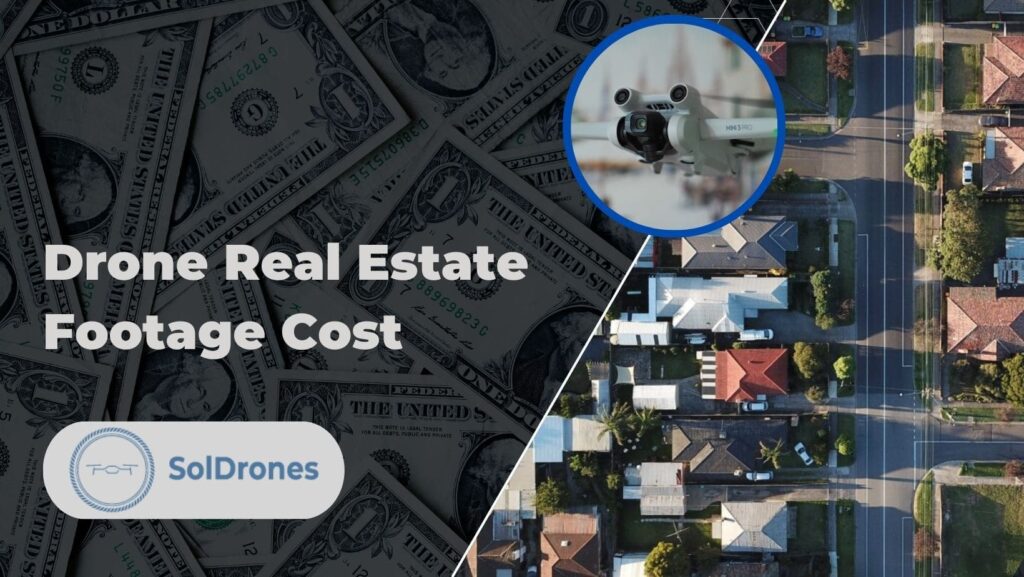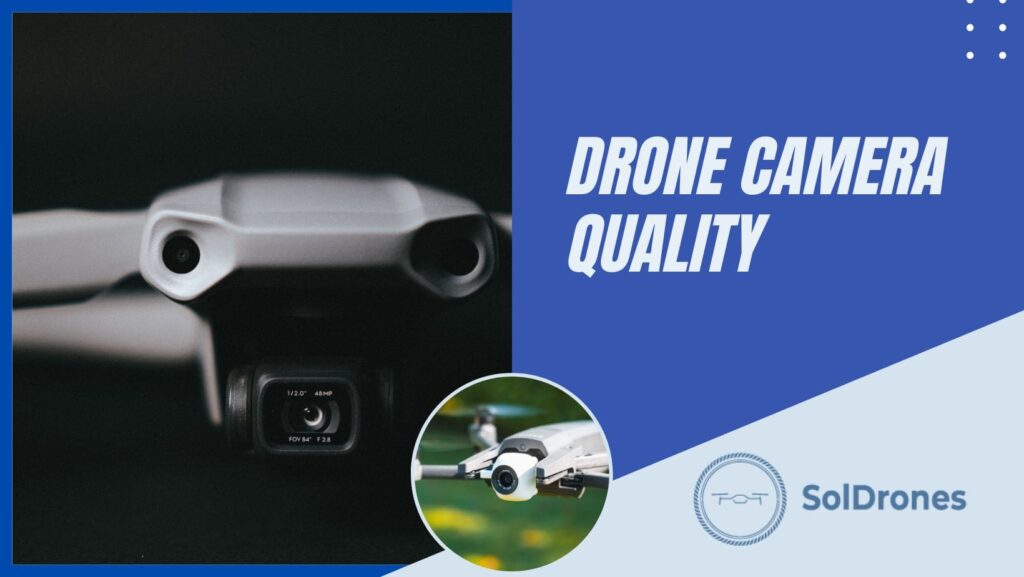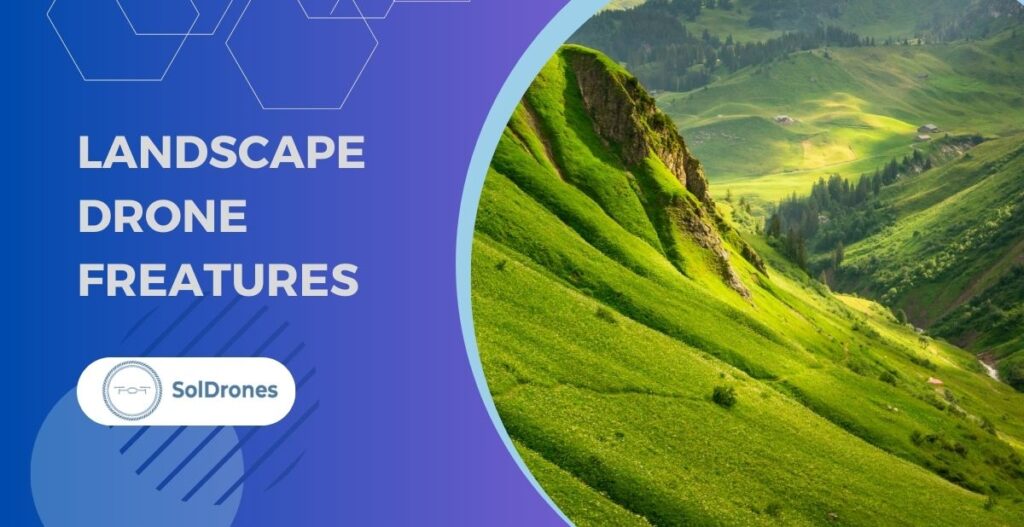The rapid ascent of drones in recent years isn’t just about capturing breathtaking aerial footage or playful backyard stunts….it’s about a transformative technology fundamentally reshaping how businesses that use drones operate.
From delivering your online shopping haul to monitoring vast agricultural fields, drones, or “unmanned aerial vehicles” (UAVs), have burst onto the commercial scene with undeniable promise.
The key players in this airborne revolution? Commercial drone operators.
With the global drone market expected to surpass $100B by 2030, and about 34%-40% of that growth coming from commercial and recreational use, businesses across various sectors are seeking their expertise.
In an age where technology and business go hand in hand, drone technology has carved out its niche, offering entrepreneurs a plethora of innovative business avenues.
This article will uncover the critical intersections of drone technology and commerce. It will address everything from the stringent regulations of the Federal Aviation Administration to the game-changing potential of drone deliveries in both local and international markets.
If the future belongs to the sky, here’s your roadmap to understanding and navigating its limitless expanse.
Article Highlights:
- Commercial drone delivery services are revolutionizing industries, from medical air services to real estate photography.
- The global marketplace is rapidly adapting to drone technology, with emerging economies showcasing notable success stories.
- While the profitability of the drone sector is evident, understanding FAA regulations and ethical considerations is crucial for long-term success.
Quick Basics of Unmanned Aerial Vehicles (UAVs)
The dawn of a new era in technology and business is often marked by innovations that redefine boundaries.
While many envision drones as gadgets for recreational videography, the truth is they have a broader, more intricate scope in the commercial world.
Definition of UAVs
Simply put, these are aircrafts without a human pilot aboard. They can be controlled remotely by a pilot on the ground or autonomously through programmed plans.
Types of UAVs
- Fixed-Wing Drones: These resemble traditional airplanes. They’re efficient, capable of long flights, and can cover vast areas, making them ideal for agriculture and mapping projects.
- Multi-Rotor Drones: Often used for photography and video, these have multiple rotors, allowing for hovering and precise positioning.
- Single Rotor Drones: Resembling mini helicopters, these are powerful and can carry heavy payloads, but they require more skill to operate.
- Hybrid Drones: These combine the benefits of fixed and rotor wings, allowing for vertical takeoff and landing alongside efficient flight.
Essential Drone Equipment and Components:
- Controllers: The lifeline for pilots. These devices send and receive signals, allowing operators to command the UAV.
- Batteries: The power source for drones. Given their limited lifespan, carrying spares is vital for longer tasks.
- Cameras and Sensors: For businesses, the right camera or sensor can mean the difference between a task done well and one that falls short.
- Propellers: Vital for lift and thrust. They come in various sizes and types, suited to specific tasks.
- GPS Modules: Crucial for navigation and ensuring drones follow their programmed paths.
In the world of commerce, UAVs aren’t merely flying gadgets; they’re tools that can redefine efficiency and open up new profitable business avenues.
Whether surveying land or delivering goods, understanding their basics is the first step towards harnessing their potential.
Current State of Commercial Drone Delivery Services
The commercial drone delivery landscape has been buzzing with activity, with several drone delivery companies vying for supremacy in this revolutionary market.
Notably, giants such as Amazon with its Prime Air service and Google’s parent company, Alphabet, through Project Wing, have been pioneers in this space. They’ve set the pace, showcasing the vast potential of drone delivery systems in real-world scenarios, such as delivering medicine via drones.
While these heavyweights are leading the charge, several start-ups and local enterprises have also taken flight, each bringing their unique flair and innovations to the table.
One of the standout advantages of drone package delivery services is speed. The ability to bypass traditional road traffic and deliver directly to a consumer’s doorstep or designated drop-off point is a game-changer.
Drones, with their aerial routes, promise reduced delivery times, which is a boon for time-sensitive deliveries such as medical supplies. Moreover, drones, being electric, offer an environmentally friendly alternative to conventional delivery vehicles, further reducing carbon footprints.
However, it’s not all clear skies. Drone delivery comes with its own set of challenges. Weather conditions play a pivotal role in the operational capabilities of drones. Heavy rain, strong winds, or dense fog can hinder or halt operations altogether.
Additionally, navigating the intricate web of federal and local regulations is no small task. The Federal Aviation Administration has set guidelines that companies must adhere to, ensuring safety for both the drones and the general populace.
As the commercial drone delivery sector continues to evolve, the balance between the revolutionary benefits and inherent challenges will determine its trajectory. What’s evident is that the skies are filled with opportunities, and businesses are keen to harness them.
The Role of Drones in Global Marketplaces
The evolution of commercial drone deliveries is evident in the global marketplace. From the buzzing streets of Asian cities to the expansive landscapes of Africa, drones have carved out a niche, with a few international markets leading the charge.
Rwanda and Ghana are examples of this shift, where drones have transitioned from cutting-edge technology to vital lifelines. They’ve spearheaded the movement of using drones for medical deliveries, ensuring vital supplies such as blood and vaccines reach far-flung corners.
Yet, integrating drones into the global delivery matrix isn’t without its hurdles. In densely populated cities like Mumbai or Bangkok, guiding a drone amidst towering structures and the relentless hum of city life requires an unparalleled finesse.
Contrastingly, in nations with varied topography like Indonesia, drone navigators grapple with diverse challenges, from volcanic terrains to vast coastal expanses.
Beyond the physical landscapes, there’s also the intricate terrain of cultural sensitivities. Depending on the region, a hovering drone might evoke wonder, curiosity, or concerns regarding privacy. For commercial drone ventures, tuning into these cultural frequencies is non-negotiable.
Drones are not merely a technological marvel but have emerged as game changers in the global commerce playbook. Their story is one of innovation, resilience, and a vision for the future. They stand testament to the fact that as commerce evolves, so do the ways we bridge distances, one airborne delivery at a time.
Regulatory Landscape: The Federal Aviation Administration’s Role
The arena of drone operations is not just about technology and business. It is, in many ways, a delicate dance between innovation and safety. At the heart of this balance in the United States is the Federal Aviation Administration (FAA). As commercial drones weave their way into the skies, the FAA ensures that they do so while adhering to specific guidelines that prioritize public safety, privacy, and airspace management.
For any entrepreneur or company eyeing the vast potential of the drone business, understanding FAA regulations is non-negotiable. These rules, often meticulous in their detail, form the backbone of legal drone operations.
One of the pivotal pieces in this regulatory puzzle is the Part 107 certification.
It isn’t just a piece of paper or a digital badge; it’s a testament to a drone operator’s knowledge of airspace rules, safety protocols, and operational guidelines.
Earning this certification signifies not only compliance but also a commitment to the highest standards of aerial operations.
In essence, the FAA doesn’t act as a barrier to commercial drone ventures but rather as a guardian. By setting clear guidelines, offering training, and mandating certifications, it ensures that the skies remain safe for everyone, both in the air and on the ground.
For businesses, aligning with these regulations isn’t just about legality—it’s about building trust in an industry that’s set to reshape the future.
How Drone Technology is Transforming Medical Air Services
The seamless blend of technology and healthcare is reshaping the dynamics of medical service delivery. As delivery drones rise to prominence, they are carving a niche in the realm of medical air services, acting as invaluable assets during critical times.
Rapid Medical Supplies Transportation
In the ticking clock scenarios of medical emergencies, every second counts. Traditional transportation means, while dependable, often face logistical challenges, such as congested traffic or unreachable terrains.
Whether it’s delivering vaccines to distant clinics, rushing blood samples to laboratories, or transporting life-saving drugs to accident sites, drones have emerged as a vital cog in the medical supply chain.
Particularly in regions with challenging terrains or those cut off due to natural disasters, drones often become the primary, if not the only, rapid response system ensuring that crucial medical supplies reach those in need.
Life-saving Moments: Drone Intervention in Emergencies
Beyond transportation, drones have etched their mark in numerous life-saving scenarios. Consider a recent event in a secluded part of Africa: a young patient required an immediate transfusion of a rare blood type. The daunting task of transporting it through traditional means would have eaten up precious hours.
However, a drone swooped in, delivering the essential blood type promptly, turning the tide in the patient’s favor. Similar heartwarming episodes resonate globally, with drones stepping up, making timely interventions, and underscoring their significance in medical crises.
As we look to the future, the horizon is clear: drones are set to play an even more pivotal role in medical air services. Their potential, coupled with advancing technology and supportive regulations, points towards a future where drones are the backbone of emergency healthcare delivery.
The Financial Viability: Starting a Profitable Drone Business
The drone industry is more than just about aerial photography or leisurely flights in the park. For the discerning entrepreneur, it’s a goldmine brimming with opportunities.
Venturing into the drone business is not just a futuristic endeavor but a current, tangible, and lucrative one.
Opportunities Beckoning Entrepreneurs
There’s a vast expanse of blue ocean in the drone market waiting to be tapped.
Think beyond simple aerial imagery. Infrastructure inspection, precision agriculture, wildlife monitoring, and security surveillance are just a few areas where drones are proving their mettle.
With industries awakening to the potential of drone technology, demand for specialized services is skyrocketing. For instance, the real estate sector now extensively employs drones for showcasing properties, while farmers leverage them for crop monitoring, pest detection, and precision spraying.
The market isn’t saturated, leaving ample room for innovation and differentiation.
Potential Returns: Beyond the Initial Investment
Starting a drone business, like any venture, requires a significant initial investment. Drones, especially those designed for commercial tasks, aren’t cheap. Then, there’s the cost of software, licenses, and training.
However, the return on investment can be substantial and swift. With the right marketing and operational strategies, entrepreneurs can recoup their initial outlays relatively quickly.
According to industry insights, professional drone pilots can earn anywhere from $50 to $500 per hour based on the nature and complexity of the job.
Furthermore, as the reliance on drone technology grows, long-term contracts and partnerships with corporations become increasingly feasible, promising a steady stream of income.
However, profitability isn’t just about numbers. It’s also about reputation, expertise, and trustworthiness. Businesses willing to invest in training, certifications, and top-notch equipment are more likely to stand out in a competitive market, drawing more clients and thus ensuring better returns.
The journey of establishing a drone business is thrilling and challenging. Yet, with the industry poised for significant growth, the rewards can be immense. For those with an entrepreneurial spirit, the skies aren’t just a playground; they’re the next business frontier. As technology progresses and markets evolve, those willing to soar will find the drone industry a lucrative space filled with endless possibilities.
Ethical and Environmental Considerations in Drone Usage
As drone technology soars to new heights in the commercial realm, it’s crucial for businesses to remain grounded in ethical and environmental responsibilities. The potential of drones is undeniably vast, but like any technological advancement, it brings forth its set of challenges.
Environmental Footprint of Drone Operations
Every flight has an environmental cost. While drones, especially electric ones, may seem greener than their traditional counterparts like trucks or planes, their widespread use can still have environmental implications.
The production, charging, and disposal of batteries, the wear and tear of components, and the energy consumption patterns are aspects businesses need to consider. Adopting sustainable practices, such as using solar charging stations or recycling old equipment, can mitigate some of these impacts.
Privacy: A Right, Not a Privilege
One of the major ethical quandaries with drones is the issue of privacy. With their capability to hover silently and capture high-resolution imagery, drones can inadvertently or intentionally invade personal spaces.
Commercial operators must ensure they’re not overstepping boundaries, both legally and morally. Implementing strict data policies, securing permissions where required, and ensuring that footage remains confidential are steps in the right direction.
Transparent and Accountable Operations
Transparency is the cornerstone of ethical business. It’s imperative for commercial drone operators to be open about their operations, intentions, and methodologies. This not only builds trust but also paves the way for constructive feedback. Regular audits, public reports, and community engagement can foster a culture of responsibility and mutual respect.
The allure of drone technology is undeniable, but businesses have a duty to operate with integrity. Balancing innovation with responsibility will ensure that the drone industry thrives in harmony with society and the environment. It’s not just about flying high, but flying right.
Niche Business Ideas Capitalizing on Drone Technology
In an age where technology and business go hand in hand, drone technology has carved out its niche, offering entrepreneurs a plethora of innovative business avenues.
The ability to capture unparalleled aerial perspectives and access hard-to-reach areas has made drones indispensable in several sectors. As the drone industry continues to flourish, it’s the niche ideas that often stand out and promise lucrative returns.
Real Estate and Event Photography: Capturing Moments from Above
- Elevated Real Estate Showcases: The bird’s eye view of properties, especially expensive ones, adds a touch of luxury to listings. Drones enable real estate agents to offer potential buyers a holistic view of properties, highlighting landscapes, swimming pools, and other amenities in a way that ground photography can’t.
- Epic Event Footage: Be it weddings, outdoor concerts, or festivals, drones can capture sweeping shots of joyous occasions. With the right equipment and editing skills, drone operators can offer clients memorable footage that stands out in a sea of ground-level shots.
Home and Roof Inspections: A New Age Solution
Safety and efficiency are paramount when it comes to home and roof inspections. Drones come to the rescue, reducing the risks associated with manual inspections. Equipped with high-resolution cameras and thermal imaging, drones can detect flaws, leaks, or damages, providing detailed reports without the need for ladders or harnesses.
Rental and Course Creation: Educating and Equipping the Masses
- Rent-A-Drone: Not everyone needs a drone round the clock. Offering drone rentals for specific projects, be it for a short film or a weekend trip, can be a lucrative venture.
- Mastering the Skies: With the rise in drone enthusiasts, there’s a growing demand for courses. From flight basics to advanced cinematography techniques, creating comprehensive courses can cater to both hobbyists and budding professionals.
Agriculture and Stock Photography: Drones Branching Out
- High-Tech Farming: Drones are revolutionizing agriculture. Equipped with sensors, they can monitor crop health, optimize irrigation, and even assist in planting. For farmers, this means higher yields and reduced costs.
- Stock Footage Galore: The demand for unique stock footage is ever-present. Drone operators can create libraries of diverse aerial shots, from bustling cityscapes to serene landscapes, catering to advertisers, filmmakers, and digital creators.
To sum it up, the versatility of drone technology has given rise to myriad niche business opportunities. With creativity, research, and a keen understanding of market needs, entrepreneurs can elevate their ventures, quite literally, to new heights. The sky isn’t just the limit; it’s the new frontier.
The Future of Drone Operations and Potential Market Expansion
The rapid evolution of drone technology over the past few years is nothing short of remarkable. As we gaze into the next decade, we can anticipate even more groundbreaking advancements, reshaping how businesses operate and the everyday lives of consumers.
A prominent prediction for the future is the further miniaturization of drones. While current commercial drones are often sizable, advancements will likely produce smaller, more efficient drones. These compact versions will be equally powerful but far more discreet, making them ideal for tasks like urban deliveries or discreet surveillance.
Another expectation is the enhanced integration of AI and machine learning into drone operations. This melding will result in smarter, more autonomous drones capable of making on-the-fly decisions. Imagine a drone that can reroute its path instantly based on weather predictions or traffic updates, ensuring timely deliveries and optimized routes.
The arena of battery technology can’t be overlooked. Drones of the future will likely be powered by longer-lasting, faster-charging, and potentially even eco-friendly power sources. This will significantly extend their flight durations, making them more feasible for extended tasks like cross-country deliveries or prolonged surveillance missions.
For businesses eager to ride this wave of innovation, preparation is key. Keeping abreast of the latest advancements, regulations, and market trends will be crucial. Establishing relationships with tech developers, participating in industry seminars, and fostering a culture of continuous learning will help companies stay ahead of the curve.
The drone industry’s skyward trajectory promises not just new technology but also an array of opportunities for businesses. As the drone economy burgeons, those poised to adapt will undoubtedly soar above the competition.
Final Thoughts
In the swiftly evolving landscape of drone technology, businesses stand on the cusp of a revolution. From understanding the basics of unmanned aerial vehicles to the pivotal role of the Federal Aviation Administration, the path is clear for entrepreneurs eyeing profitability.
The potential of drones in medical emergencies showcases just one facet of their transformative power. Yet, as we leverage drones for various ventures, ethical and environmental considerations remain paramount.
With niche business ideas sprouting in real estate, agriculture, and beyond, the next decade promises even more seismic shifts. Businesses ready to embrace these changes will find themselves leading the new drone economy.
FAQs
What are unmanned aerial vehicles (UAVs)?
Unmanned aerial vehicles, commonly referred to as drones, are aircrafts without human pilots onboard. They can be remotely controlled or fly autonomously through programmed flight plans.
Which companies are leading in commercial drone delivery services?
Prominent companies include Amazon Prime Air, UPS Flight Forward, and Wing, a subsidiary of Alphabet.
How do international markets view drone technology?
Various international markets are welcoming drone technology, especially in sectors like delivery and agriculture. However, adaptation varies based on regional regulations and cultural perspectives.
What role does the FAA play for commercial drone operators?
The Federal Aviation Administration (FAA) provides regulations and certifications, such as the Part 107 training, to ensure safe and legal commercial drone operations in the U.S.
How can drones be pivotal in medical emergencies?
Drones offer quick transportation of medical supplies, especially in hard-to-reach areas, and have been used in emergencies like delivering vaccines or transporting organ transplants.

